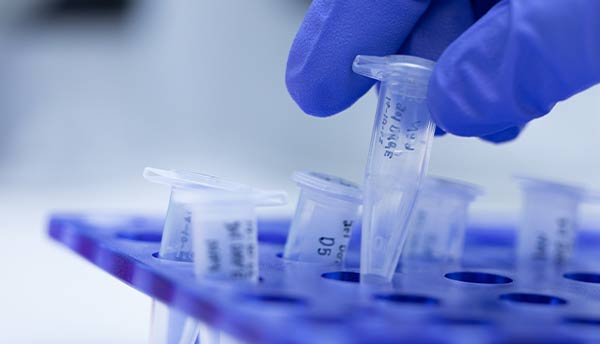How do you use
molecular biology to
make an impact?
About the qPCR Grant
qPCR is a workhorse tool in most gene expression studies but developing the right techniques for your system can be difficult. We started the Promega qPCR Grant program in 2019 to provide scientists with the support they need to overcome challenges in the lab and succeed in their research goals.
With the grant, you’ll not only receive $15,000 (or local currency equivalent) to use towards a selection of Promega products, including molecular biology supplies and reagents, you’ll also get exclusive access to a Promega technical mentor for experiment design, optimization and troubleshooting. We want you to have the resources you need to make an impact. .

Applications for the 2023 qPCR Grants closed on May 5, 2023
2023 qPCR Grant Applications are currently being evaluated. Check back in July 2023 to learn about the 2023 recipients. Sign-up for early notification of the next qPCR Grants and to receive the latest qPCR grant news and resources.
Want the latest qPCR grant news and resources sent to your inbox?
Previous Recipients
2023 Grant Recipients

Sabrina Alves dos Reis
National Cancer Institute | Brazil
“Immunotherapies using CAR-T approved for clinical use have laborious procedures and high costs, which may compromise their wide use, especially in the Brazilian context. Part of this cost can be justified because of the use of viral vectors for the genetic modification of T lymphocytes and subsequent expansion of these cells [are] procedures that have high impact on the final price of the manufacturing process. Therefore, the strategy developed by our group […] uses Sleeping Beauty (SB), a non-viral gene delivery vector, where the plasmids encoding the transgene (carried by a transposon) and the SB transposase responsible for the integration reaction are delivered to the cells by electroporation. [This constitutes] a high biosafety system that involves only the manipulation of plasmids […], which allows the generation of genetically modified lymphocytes for a considerably reduced cost.”

Laura Leighton
Australian Institute for Bioengineering and Nanotechnology | Australia
“Lipid nanoparticle encapsulated messenger RNA (mRNA) is a transient gene delivery substrate which enters cells easily and is readily translated into protein, then degraded by the cell. The remarkable success of mRNA vaccines against COVID-19 demonstrated that this technology is safe and effective in humans and has the potential to revolutionize healthcare. Our laboratory aims to develop mRNA-based cancer therapeutics which target the dysregulated genes which drive cancer, and an essential part of our research program is finding ways to increase the half-life of synthetic mRNAs within the cell [and, or] the efficiency with which they are translated into protein.”

Agustín Moreira-Saporiti
Marine Biological Laboratory | United States
“Zostera marina is a seagrass species that reproduces sexually (through seeds) and asexually (through rhizomes). This submerged plant occupies a narrow strip of shallow coastline that is under increasing anthropogenic pressure. As a consequence, existing populations face multiple pressures, and seagrasses are globally declining. […] Seagrass meadows are extremely difficult to restore as new plants display low survival rates (38%). One reason is the small scale of many restoration trials. Unfortunately, large-scale restoration actions are often not possible because transplanting plants from a donor site is a destructive practice. Seed-based restoration reduces damage but presents the added difficulty of identifying donor populations as seagrasses flowering events are generally unpredictable. As of now, a genetic roadmap for blooming is not available for submerged plants. Identifying the genes linked to flowering is, therefore, a priority area of research.”
The 2020, 2021 and 2022 programs were postponed.

Abbeah Mae Navasca
TADECO Inc. | Philippines
“Philippines is one of the top banana exporters in the world. However, the detection of RNA-based viruses infecting banana plants remains a challenge. These viruses may be present in asymptomatic plants and hence the risk of using these materials as sources for tissue-culture procedures is high. It is therefore important to establish a protocol that can reliably detect these RNA-based viruses, namely Banana Bract Mosaic Virus and Cucumber Mosaic Virus.”
Blog | Researching the Researcher: Abbeah Navasca, 2019 Real-Time PCR Grant Winner

Alberto Biscontin
University of Padova | Italy
“The Antarctic krill is a key species of the Southern Ocean ecosystem where it plays a central role in the Antarctic food web as the most abundant organism of zooplankton. Available evidence indicates that an endogenous timing system, which enables it to synchronize its metabolism and behavior with an environment characterized by extreme seasonal changes in terms of day length, food availability, and surface ice extent. The aim of my research is to characterize the molecular endogenous clock of the Antarctic krill in both adult and larval life. In particular, we plan to determine 1) whether adult krill possess a working circadian clock; 2) how the circadian clock adapts its oscillation to different photoperiod; 3) how early in the development the expression of circadian genes starts; and 4) at which larval stage the endogenous clock starts ticking.”
Blog | Researching the Researchers: Alberto Biscontin
Blog | Promega qPCR Grant Funds Genetic Database for Antarctic Krill

Leonardo Acuna
Florida International University | United States
“To best understand the development and progression of liver disease in people living with HIV, it is imperative to recognize cofactors that could be exacerbating liver disease. One such cofactor is the use of illicit drugs such as cocaine. The relationship between cocaine and HIV, and how these two variables contribute to the progression of liver disease, has not been extensively studied. The metabolism of cocaine into norococaine has been shown to produce reactive oxygen species (ROS) that can damage hepatocytes by liver peroxidation. Cocaine can also prime cells for HIV infection and enhance HIV replication and gene transcription.”
More qPCR Resources
Waiting to hear back about your application or getting ready for when applications open again? In the meantime, explore our resources on optimizing and troubleshooting qPCR assays.


